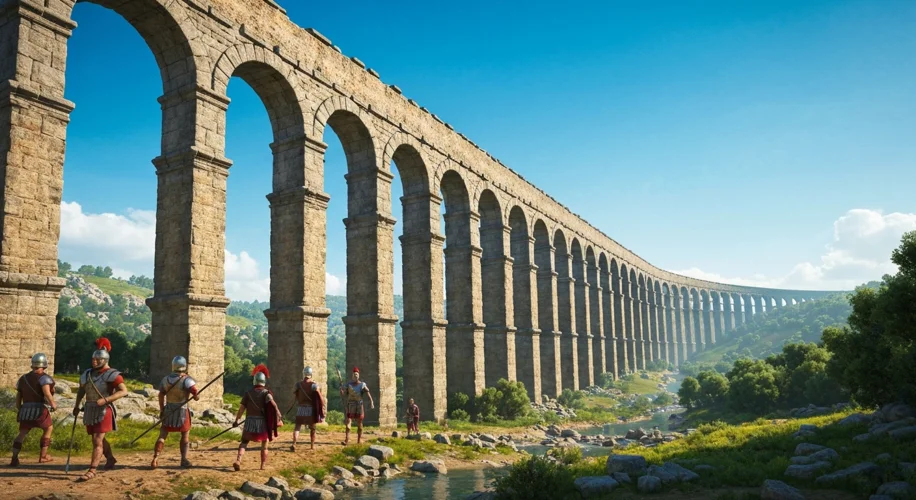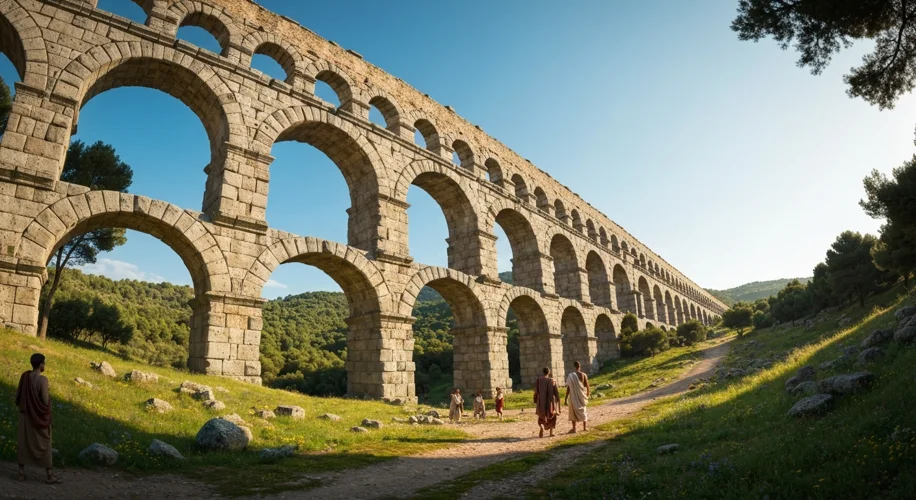Imagine a city, not by a river, but perched on hills, teeming with life, demanding water for its baths, fountains, and homes. This was Rome, and it was a demand that could have choked its growth. Yet, the Romans, masters of practical application, did not just meet this challenge; they conquered it, building a network of arteries that still astound us today: the aqueducts.
Before the aqueducts, Roman life, like that of most ancient cities, was dictated by proximity to natural water sources. Rivers, springs, and wells were the lifelines. But as Rome swelled from a burgeoning republic into a sprawling empire, its thirst grew. By the 1st century CE, Rome alone was home to over a million people, a population density that would strain even modern infrastructure without sophisticated water management.
The first aqueduct, the Aqua Appia, was a humble beginning, constructed in 312 BCE. It was primarily an underground channel, a testament to the Romans’ early understanding of gravity and their ability to move earth. But as their ambition grew, so did their engineering prowess. The true marvel lies in the aqueducts that defied the landscape, arching gracefully over valleys and plains, carrying water for miles upon miles.

Consider the Aqua Claudia, completed in 52 CE. This colossal structure, some parts of which still stand today, stretched for nearly 70 kilometers. Its construction was a symphony of human effort, meticulous planning, and an astonishing understanding of physics. The Romans harnessed the power of gravity, ensuring a consistent, gentle slope from the source springs in the distant hills to the city’s distribution points. This gradient, often as slight as a 1:3000 ratio, was critical. Too steep, and the water would erode the channels; too shallow, and it wouldn’t flow.
Their material of choice was often opus caementicium, a revolutionary Roman concrete that was incredibly durable, even underwater. This allowed them to build piers and arches capable of withstanding the test of time and the elements. Teams of skilled laborers, overseen by engineers and surveyors, worked with incredible precision. They used sophisticated tools like the chorobates, a long level, to maintain the precise gradient over vast distances, and the groma, a cross-staff with plumb bobs, for accurate right-angle turns.
The distribution system within the cities was equally impressive. Water was channeled into large cisterns, then distributed through a network of lead pipes to public fountains, baths, latrines, and the homes of the wealthy. The Baths of Caracalla, for instance, were not just a place for hygiene but a social and recreational hub, impossible without a constant, abundant water supply.
The impact of these aqueducts was profound and multifaceted. They were not merely feats of engineering; they were instruments of Roman power and civilization. They enabled the growth of cities, improved public health by providing clean water and facilitating sanitation, and facilitated the development of the iconic Roman baths, which were central to social life. The presence of running water was a visible symbol of Roman dominance and technological superiority, projecting an image of order and prosperity across the vast empire.
Moreover, the aqueducts represent a remarkable organizational achievement. Constructing and maintaining these massive structures required a level of logistical coordination and resource management that was unparalleled in the ancient world. It speaks volumes about the Roman capacity for centralized planning and large-scale project execution.
Today, when we stand before the weathered arches of the Pont du Gard in France or the remnants of the Aqua Claudia near Rome, we are not just looking at ancient ruins. We are witnessing the enduring legacy of human ingenuity, a testament to a civilization that understood the vital importance of water and possessed the vision and skill to deliver it, flowing for centuries, a lifeblood for an empire that shaped the course of Western history.

